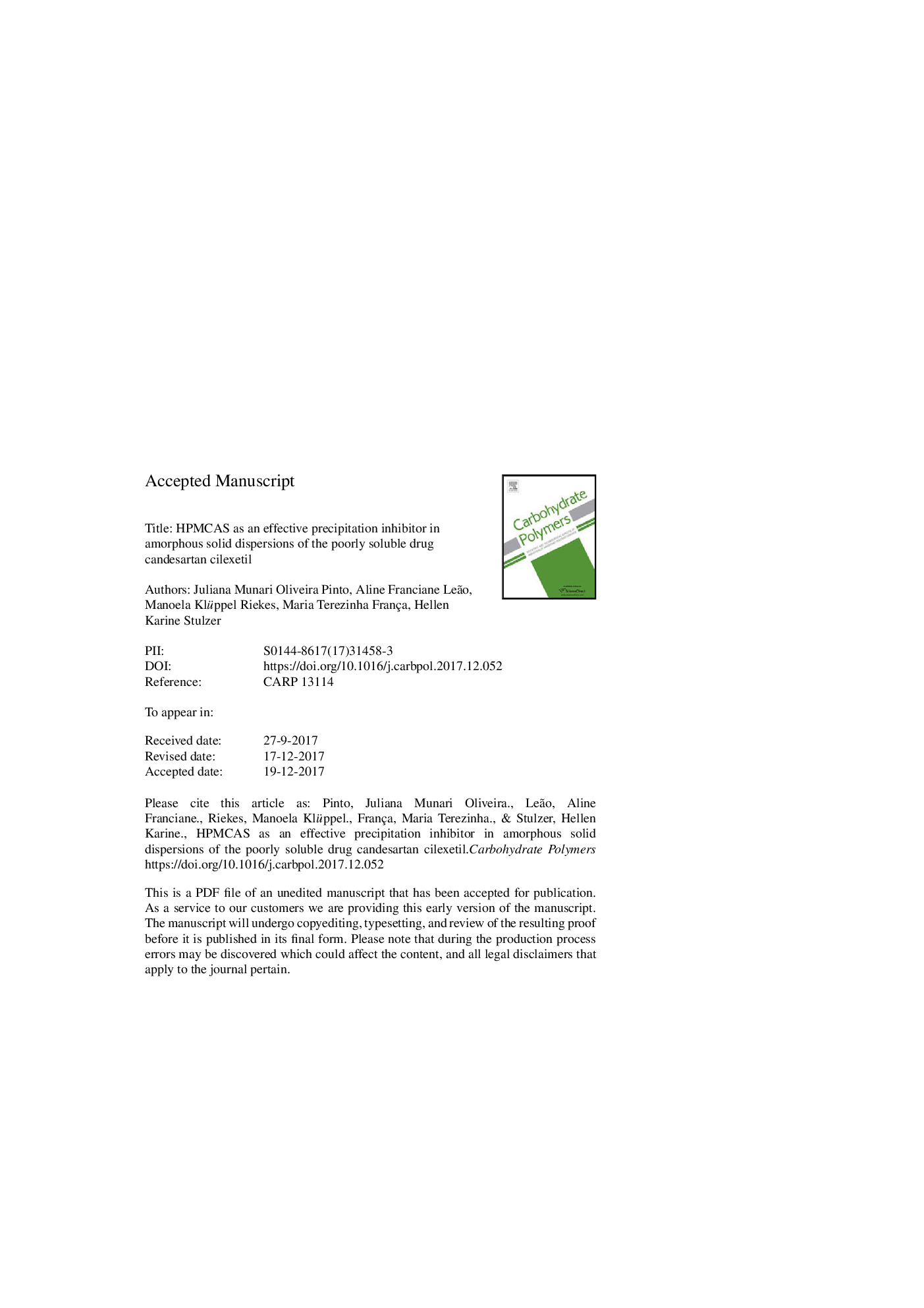| Article ID | Journal | Published Year | Pages | File Type |
|---|---|---|---|---|
| 7783880 | Carbohydrate Polymers | 2018 | 22 Pages |
Abstract
Among the strategies to improve the biopharmaceutic properties of poorly soluble drugs, Supersaturating Drug Delivery Systems like polymer-based amorphous solid dispersions (SD) have been successfully applied. The screening of appropriate polymeric carriers to compose SD is a crucial point on their development. In this study, hydroxypropylmethylcellulose (HPMC), hydroxypropylmethylcellulose acetate succinate (HPMCAS) types L, M and H and polyvinyl caprolactam-polyvinyl acetate-polyethylene glycol graft copolymer (SOL) were evaluated by in vitro supersaturation studies regarding their anti-precipitant ability on the poorly soluble drug candesartan cilexetil (CC) under two different media, including biorelevant conditions. According to the results, HPMCAS M was considered the best carrier to develop SD containing CC among all the polymers tested, due to its good anti-precipitant performance in both media. In addition, the medium used in the in vitro supersaturation studies played an important role on the results, and its selection should be carefully done.
Related Topics
Physical Sciences and Engineering
Chemistry
Organic Chemistry
Authors
Juliana Munari Oliveira Pinto, Aline Franciane Leão, Manoela Klüppel Riekes, Maria Terezinha França, Hellen Karine Stulzer,
